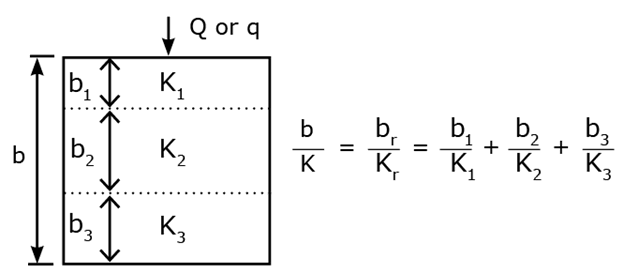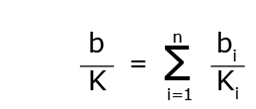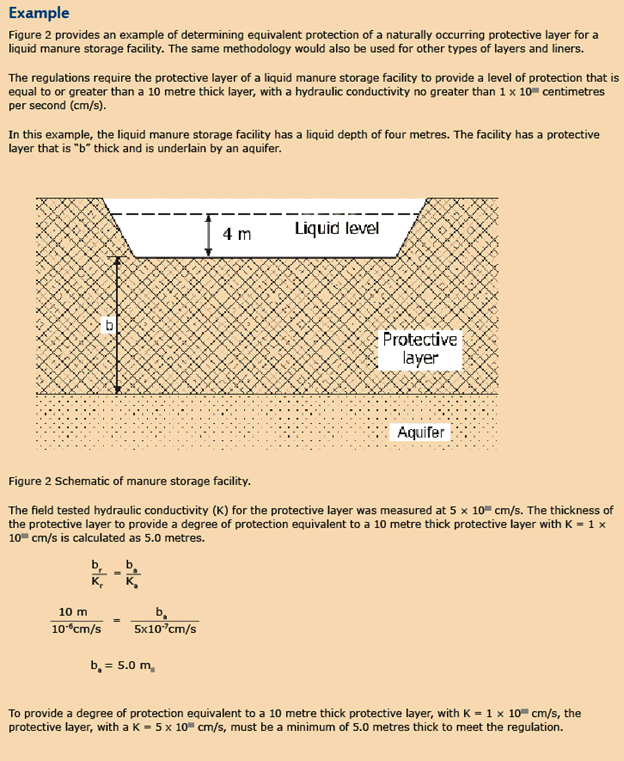| | Introduction | Assumptions | Methods | Calculations | Reporting | For more information
Purpose
- Provide a consistent method for calculating the hydraulic conductivity of naturally occurring protective layers and constructed earthen liners in order to determine if a liner is equivalent to or greater than the requirements set out by the Agricultural Operation Practices Act
Audience
- Consultants responsible for determining site requirements for naturally occurring protective layers and constructed earthen liners
Relevant Legislation
- Agricultural Operation Practices Act and Standards and Administration Regulation
Introduction
This guideline outlines the recommended method that should be used to determine the hydraulic conductivity of a naturally occurring protective layer (layer) or a constructed earthen liner (liner). The hydraulic conductivity of the layer or liner is an important factor in determining whether the level of groundwater resource protection meets the requirements of the regulation. All calculations to determine the hydraulic conductivity of the layer or liner, and all associated activities, must be performed by a suitably qualified professional.
A protective layer or constructed liner are layers of material that restricts the movement of manure constituents from manure storage and collection facilities into the uppermost groundwater resource. A protective layer is either an unaltered layer of geologic material or a combination of layers. Constructed liners are systems comprised of compacted soil or synthetic material.
The layer or liner must provide equal or greater protection than the regulations require for specified manure collection and storage areas. However, site-specific values for thickness or hydraulic conductivity can differ from the requirements specified in the regulation if equivalent protection can be shown.
The hydraulic conductivity of the protective layer or the constructed liner will vary at every site. The method presented in this guideline allows consultants to determine a single hydraulic conductivity value that can be compared to the regulatory requirements.
The method presented in this guideline is recommended and accepted by the Natural Resources Conservation Board (NRCB) for typical situations. The NRCB must be consulted when methods other than the one presented in this guideline are proposed. Proper justification must be provided for any alternative methods.
Assumptions
The method presented in this guideline assumes that protective layers and constructed liners lie horizontally, and that the direction of water flow is vertical. It also assumes that all flow through the protective layers and constructed liners occurs under saturated conditions. These assumptions allow for relatively simple equivalency calculations that are appropriate for determining long-term system performance.
Methods
The method presented in this guideline is suitable for most applications. It is based on contaminant mass flux through the system (the mass that travels through the system) as opposed to contaminant travel time. This method provides a more realistic indication of the potential impact on down-gradient receptors than a measure based on time.
The structural integrity of the protective layer or constructed liner is important, even if the hydraulic conductivity at the site meets or exceeds the requirements set out in the regulations.
- A naturally occurring protective layer that is thinner than the regulation, but meets the hydraulic conductivity requirements, must have a minimum 0.5 metre thick protective soil cover to ensure its structural integrity.
- The minimum thickness of a constructed liner must be no less than 0.5 metres.
If the proposed layer or liner is less than 0.5 metres thick, the NRCB must be consulted to determine the appropriate solution.
Calculations
The method presented in this guideline uses an equation to calculate the equivalent hydraulic conductivity of a layered system (Figure 1). The result of the calculation is a measure of hydraulic conductivity that can be used to calculate the required thickness. It is also used to compare the hydraulic conductivity of the system with the requirements set out in the regulations. This calculation can be used for single and multi-layer systems.
Borehole logs are used to determine the thickness of the existing layers. Preferably, hydraulic conductivity information should be collected in-situ in the field, rather than using lab tests. This information must also be determined for each layer that may be used.

Figure 1. Example of a horizontally layered system with flow perpendicular to the layering.
Single-layer systems
The following equation is used if the site has one protective layer or constructed liner.

In this equation, br and Kr are the thickness and hydraulic conductivity values specified in the regulation, and ba and Ka are the actual, measured thickness and hydraulic conductivity values. It is important to note that the calculated values for thickness and hydraulic conductivity are the minimum requirements.
Multi-layer systems
The equation below is used for multi-layer systems.

In this equation, bi and Ki are the thickness and hydraulic conductivity of any individual layer; b is the total thickness of all layers; and K is the equivalent hydraulic conductivity for the system of total layers (“n”). Again, as in the single layer method, the calculated value represents the minimum requirement.
Reporting
Applications to the NRCB that meet or exceed the requirements for groundwater resource protection need to provide soil investigation information or geotechnical reports. They do not have to provide calculations of equivalence. Applications that will rely on equivalence with the regulations must include the detailed calculations, as well as a soils investigation or geotechnical report. The calculations must demonstrate how the equivalency and proposed outcomes were determined. All equivalency calculations must be performed by a suitably qualified professional.

For More Information
Contact your nearest NRCB field office or an AF Agri-Environmental Extension Specialist (dial 310-0000 to be connected toll free).
Alberta Agriculture and Forestry
www.agriculture.alberta.ca/aopa
Ag Info Centre 310 FARM (3276)
Publications (780) 427-0391
Natural Resources Conservation Board
www.nrcb.ca
Fairview - closed, please contact Morinville.
Morinville (780) 939-1212
Red Deer (403) 340-5241
Lethbridge (403) 381-5166
This guideline was developed by the Technical Advisory Group, a partnership between Agriculture and Forestry, the Natural Resources Conservation Board and the agricultural industry.
Source: Agdex 096-61. May 2013. |
|